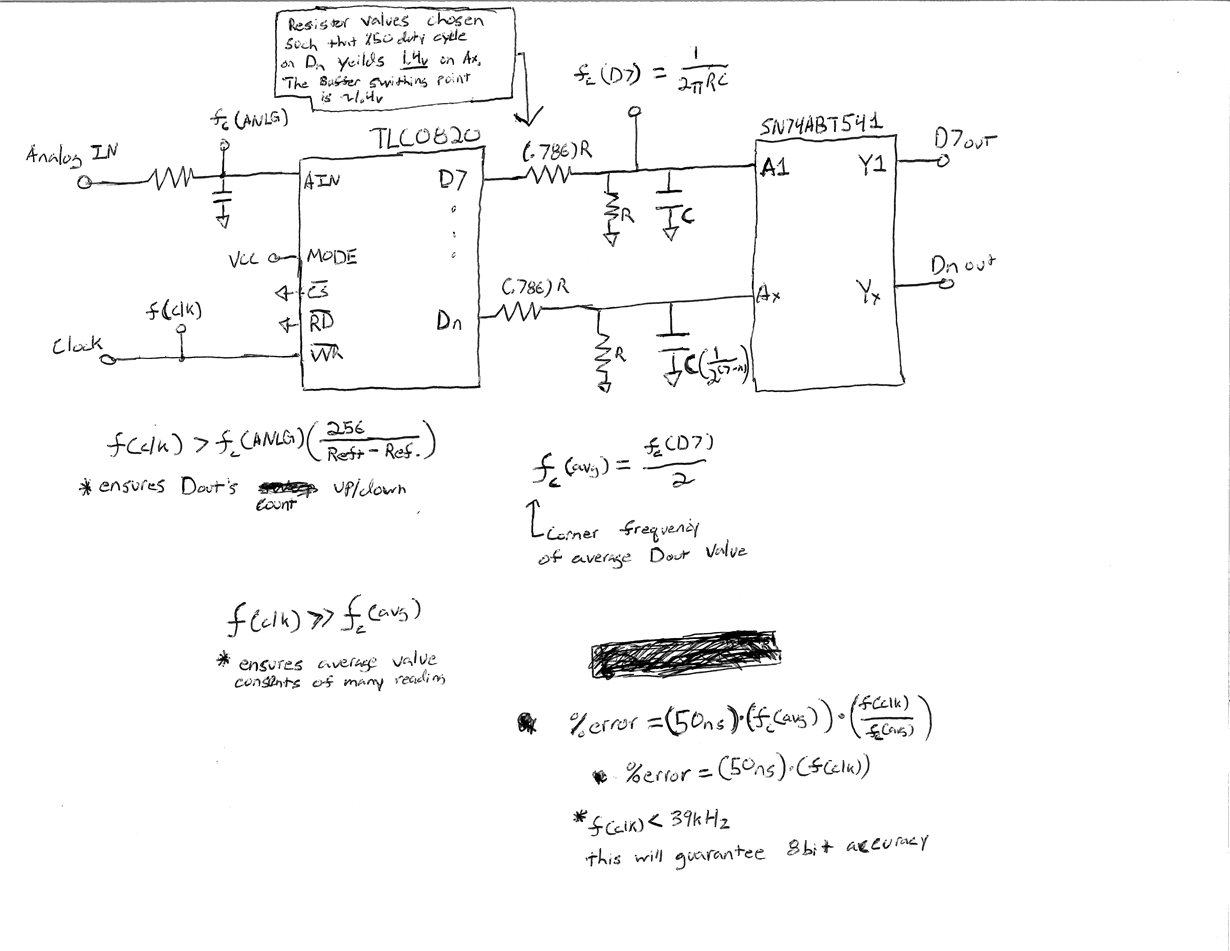Other Parts Discussed in Thread: SN74HCT373
Hi-
I am looking at using a TLC0820 ADC.
I am trying to minimize external the components needed to control the ADC conversion.
I have 2 requirements:
Use 1 control signal (The control signal will be slow, 10kHz max)
Avoid the tri-state output.
Will the following control set up work?
Thanks
Tony.


